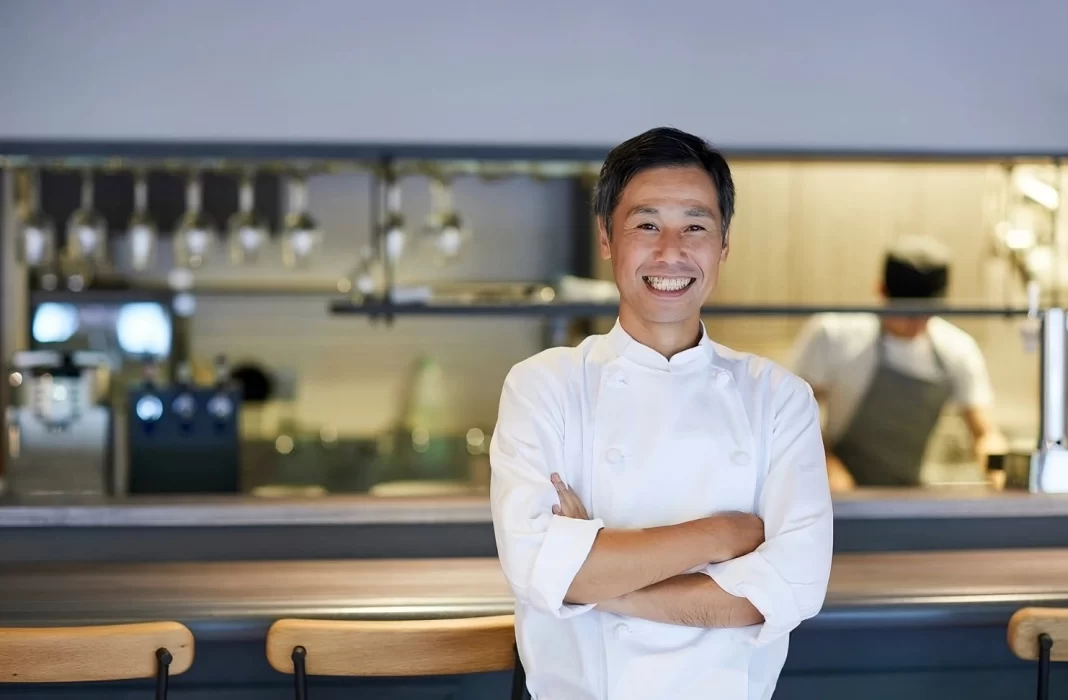Opening a fine dining restaurant isn’t just about serving great food. It’s about precision, consistency, and elevating every guest’s experience to the level of expectation. This is a business where ambiance, service, and storytelling carry equal weight as what’s on the plate.
Here, you don’t just feed people; you curate moments they’ll remember, often tied to important occasions and high emotional stakes.
But with high standards come high costs and even higher risks. The fine dining segment demands deep planning, capital investment, and a culture of excellence that starts in the kitchen and extends to the front desk. From sommelier training to sound design, every decision must reinforce quality.
This guide breaks down everything you need to know about how to open a fine dining restaurant. Whether you’re an industry veteran or an ambitious first-time owner, here, you’ll find structured, practical insights that reflect how fine dining actually works today.
What Makes a Restaurant Fine Dining?
A fine-dining restaurant has a strict structure. The kitchen is led by trained chefs who use high-level techniques, work with premium ingredients, and maintain consistency across every plate.
Service is formal, organized, and quiet. Staff are trained to follow a defined service sequence and are expected to know the menu in detail. The dining room is clean, controlled, and intentionally designed. There’s no crowding or noise.
Lighting and music are kept at a level that supports conversation without distraction. Most restaurants enforce a dress code, and guests are expected to follow it. Wine is a central part of the offering. Menus are built around food and wine pairing, often with help from a certified sommelier.
Reservations are prioritized. Many locations operate on pre-bookings only, with deposits or fixed seating times.
Small details matter. That includes table spacing, menu layout, napkin folding, and how silverware is aligned. These steps may not seem visible initially, but they shape the overall dining experience and define what fine dining truly means.
Why and How to Open a Fine Dining Restaurant?
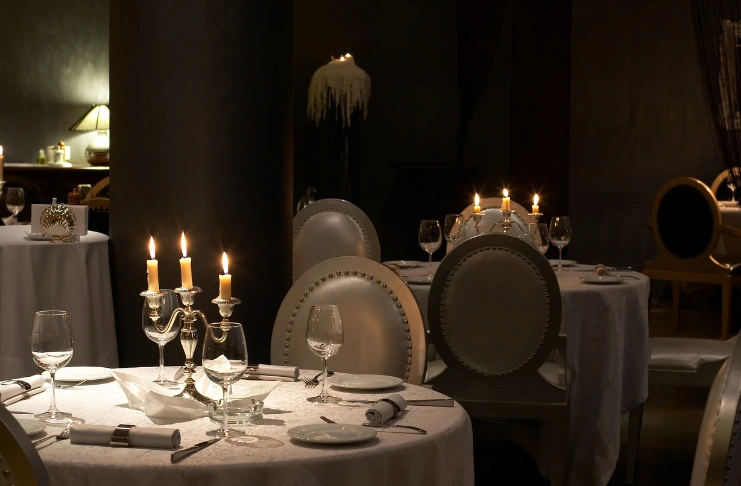
Opening a fine dining restaurant offers a unique opportunity to tap into a profitable market segment focused on quality and experience rather than volume.
This type of restaurant targets customers willing to pay premium prices for excellent food, impeccable service, and a sophisticated atmosphere. These customers often seek venues for special occasions, business dinners, or memorable experiences. This creates steady demand even when casual dining or fast food traffic fluctuates.
Fine dining restaurants also benefit from higher average checks. The combination of gourmet cuisine, multiple courses, and curated wine lists allows owners to charge more per guest compared to casual eateries. This can translate into better revenue per table if managed well.
Another reason to open a fine dining establishment is the growing appreciation for culinary artistry and elevated dining experiences. Today’s consumers want more than just food; they want an event, a story, and refined service. This trend supports fine dining’s relevance despite competition from casual dining and fast food restaurants.
From a business perspective, fine dining can create strong brand loyalty. When guests associate your restaurant with quality and memorable experiences, they return more often and recommend your place to others. This word-of-mouth marketing is invaluable and reduces reliance on heavy discounting or promotions.
There are risks, though. Fine dining requires significant upfront investment in kitchen equipment, décor, staff training, and compliance. It also demands tight operational control to maintain consistency.
However, for those who prepare carefully and focus on delivering a true fine dining experience, the rewards include a sustainable business model and a respected place in the restaurant industry.
INDUSTRY INSIGHT
| The global fine dining market is growing fast, valued at $166.86 billion in 2024 and projected to hit $243.17 billion by 2030, rising at 6.54% CAGR. This growth is driven by rising disposable incomes, urban affluence, and a strong appetite for premium culinary experiences. Julius Baer’s 2024 report found that over 70% of high-net-worth individuals spend more on fine dining, drawn to exclusivity, gourmet menus, and refined service. The industry has bounced back post-pandemic, up 27% between 2022 and 2024, fueled by immersive dining trends that blend food, entertainment, and social experiences. |
That said, the next question is, how can you start your own fine-dining restaurant? Here are the exact steps:
Step 1: Develop Your Restaurant Concept
Pick a specific cuisine and stick with it. Don’t try to be everything to everyone.
Ask yourself: Do you want to open a steakhouse, a French bistro, or a contemporary American restaurant? Your concept will drive every other decision you make.
Research your local market first. Visit every upscale restaurant within 20 miles. What are they serving? What price points? What’s missing? Look for gaps you can fill rather than copying what already exists.
Write down your restaurant’s identity in one sentence. “We serve modern Italian cuisine in an intimate setting for date nights and business dinners.” Everything from your menu to your music should support this identity.
Step 2: Create Your Business Plan
You need a detailed financial roadmap before spending a dollar. Banks and investors want to see realistic numbers before they lend you a loan or financial support.
Start with your startup costs. Fine-dining restaurants typically cost $500,000 to $1.5 million to open. Break this down into equipment ($100,000-$300,000), renovation ($50,000-$250,000), initial inventory ($30,000-$100,000), and working capital for the first few months.
Calculate your ongoing expenses. Rent should be no more than 6-10% of projected sales. Food costs will run 28-32% for fine dining. Labor costs another 30-35%. Add utilities, insurance, marketing, and loan payments.
Project your revenue conservatively. If you have 50 seats and turn them 1.5 times per night with an average check of $45, that’s $3,375 per night. Multiply by the number of nights you’ll be open. Remember, fine-dining restaurants often close on Mondays and have slower weeknights.
Step 3: Find the Right Location
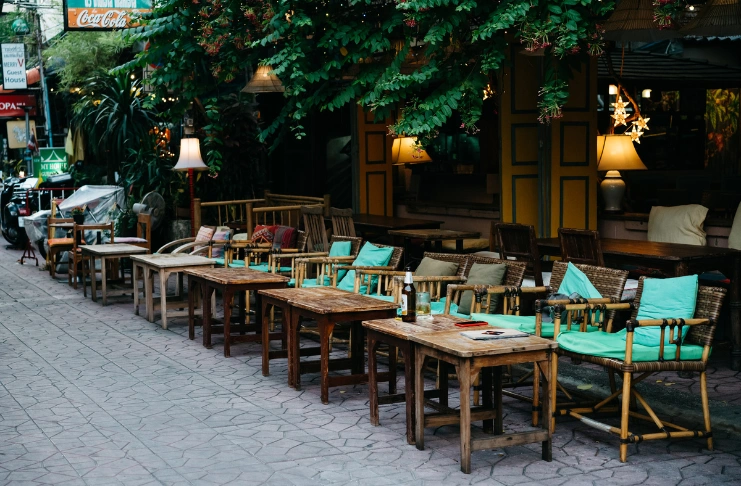
You need to be where people with money go out to eat. Look at household income data for different neighborhoods. You want areas where families earn over $75,000 annually.
Visit potential locations at different times. How’s the foot traffic? What’s the parking situation? What other businesses are nearby? A location near luxury hotels, theaters, or business districts works well for fine dining.
Calculate the real cost. Rent is just the beginning. Add utilities, property taxes, insurance, and any required improvements. Many landlords require personal guarantees, so understand what you’re signing.
Negotiate lease terms carefully. You’ll need time and money for renovations. Push for at least a 10-year lease with renewal options. If you’re in a shopping center, include clauses about co-tenancy.
Step 4: Get Your Licenses and Permits
Start this process early. Some permits take months to obtain, and you can’t open without them.
Apply for your business license first. This varies by city but usually involves registering your business name and paying fees. You’ll need this before applying for other permits.
The food service license requires approval from the health department. An inspector will review your plans and visit your completed kitchen. Before construction, make sure your kitchen design meets all health codes.
A liquor license is essential for profitability. Fine dining restaurants make significant money on wine and cocktails. These licenses are limited and expensive. In some areas, you might pay $50,000-$300,000 just for the permit.
Remember to include building permits for renovations, signage permits, and a sales tax permit. Each has its timeline and requirements.
Step 5: Design Your Space
Your dining room needs to feel special from the moment guests walk in. Hire a designer who understands fine dining.
Plan for 15-18 square feet per seat in the dining area. Closer than this feels cramped. Tables should be far apart for private conversation. Consider booth seating for intimacy and regular tables for flexibility.
Then comes the lights. It can make or break your space’s atmosphere. You want warm, dim lighting that makes people look good and feel relaxed. Avoid harsh overhead lights. Invest in dimmers and accent lighting.
Your kitchen needs serious planning. Fine dining kitchens require more space and equipment than casual restaurants. Budget $1,000-$2,000 per seat for kitchen equipment. Include proper ventilation, adequate storage, and separate prep areas.
Step 6: Secure Financing and Finalize Construction
With your business plan complete and space designed, now secure your funding if you haven’t already. Present your detailed business plan to banks, investors, or SBA lenders.
Fine dining restaurants often require $ 500 K-$1.5 M, so having multiple funding sources lined up is crucial.
Once financing is secured, begin construction and renovations. This phase typically takes 3-6 months for fine dining establishments. Work closely with contractors who understand restaurant requirements – proper ventilation, commercial-grade electrical, and health department specifications.
Order your kitchen equipment early, as commercial appliances can have long lead times. Monitor the construction budget carefully, as overruns are common and can derail your opening timeline.
Step 7: Build Your Team
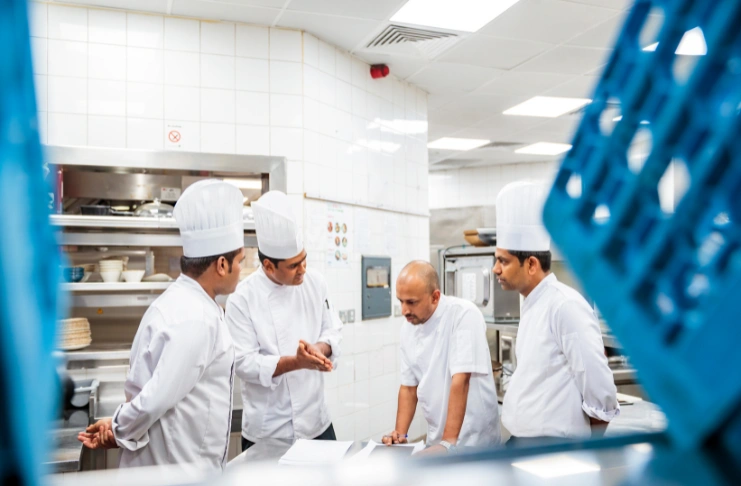
Start with your chef. This person shapes your entire food program. Look for someone with fine dining experience who understands your concept. They should know food costs, menu development, and kitchen management.
Pay your chef well. Good executive chefs for fine dining restaurants earn an average base salary of $98,355 annually plus benefits. This seems expensive, but a bad chef will cost you much more in failed dishes and unhappy customers.
For front of house, hire servers with upscale restaurant experience. Fine dining service requires knowledge of food, wine, and proper service techniques. Plan to pay servers $15-$20 per hour plus tips.
Train everyone extensively before opening. Your staff represents your restaurant. They need to know every ingredient in every dish, wine pairings, and how to handle special requests professionally.
Step 8: Create Your Menu
Keep your menu focused. Too many options confuse customers and complicate kitchen operations. Most successful fine dining restaurants offer 6-8 appetizers, 8-12 entrees, and 4-6 desserts.
Price for profit. Your food costs should be 25-35% of menu prices. If a dish costs you $12 to make, price it at $38-$42. Don’t forget to include labor and overhead in your calculations.
Write clear, appealing descriptions. Avoid overly fancy language. “Pan-seared salmon with lemon risotto and seasonal vegetables” works better than “Sustainably sourced Atlantic salmon delicately prepared with aromatic citrus-infused arborio rice.”
Test every dish multiple times before adding it to your menu. Make sure your kitchen can execute it consistently during busy periods.
Step 9: Build Your Wine Program
A strong wine list boosts your profits significantly. Wine typically has a 300-400% markup, much higher than food. Most restaurants have around a 70% profit margin on wine.
Start with 40-60 wines covering different price points and styles. Include wines that pair with your menu. Don’t just pick expensive bottles; offer good values too.
Train your staff on wine basics. They don’t need to be sommeliers, but they should know the difference between Pinot Noir and Cabernet Sauvignon. Consider sending key staff to wine classes.
Price your wines at 2.5-3 times the wholesale cost. A $20 wholesale bottle should sell for $50-$60. Offer several wines by the glass to increase sales.
Step 10: Create a Pre-Opening Buzz
Before you open, create awareness in your target market. Fine dining customers often research restaurants before visiting, so establish your online presence early.
Build a professional website with your concept, menu previews, and reservation capabilities. Set up social media accounts and share behind-the-scenes content during construction.
Partner with local influencers, food bloggers, and the culinary community. Consider hosting a chef’s table event or tasting for local media and VIP customers before your soft opening.
Join local restaurant associations and the chamber of commerce to build industry connections. Create an email list for interested customers and send updates about your opening timeline.
This groundwork ensures you have customers ready to book when you launch.
Step 11: Set Up Operations
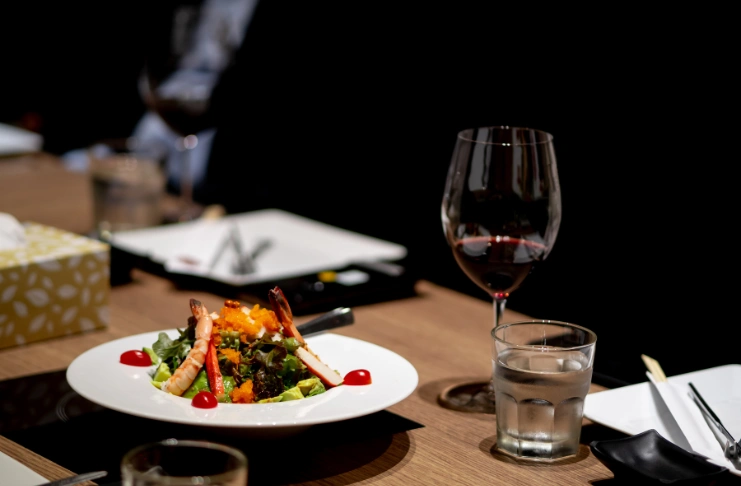
Install a restaurant POS system designed for full-service operations. You need features like table management, split checks, and detailed reporting. Budget $3,000-$8,000 for a quality system.
Create reservation policies. Fine dining restaurants need reservation systems to manage capacity and guest expectations. Decide how far in advance you’ll take reservations and your cancellation policy.
Develop standard operating procedures for everything. How do you greet guests? Set tables? Handle complaints? Write it all down and train your staff consistently.
Track your key numbers daily: average check size, table turnover, food and labor costs. These metrics tell you how your business is performing.
Step 12: Plan Your Opening
First, hold a soft opening. Invite friends, family, and members of the local food industry. This will allow you to test your systems with real customers before opening them to the public.
Price your soft opening meals lower than regular prices. You’re still learning; people understand they’re helping you resolve issues.
Use feedback seriously. If multiple people mention the same problem, fix it before your grand opening. Common issues include slow service, confusing menus, or inconsistent food quality.
Plan at least two weeks of soft openings. You need time to adjust and retrain based on what you learn.
Step 13: Launch
After the soft opening, schedule your grand opening with clear goals. Make sure all staff are fully trained and confident. Your kitchen, service, and front-of-house operations should run smoothly by now.
Use this event to create buzz. Invite local press, influencers, and community leaders. Promote the launch through social media and your website to attract your target market.
Monitor everything closely on opening day and in the following weeks.
Track customer feedback and operational metrics like table turnover and service speed. Be ready to make quick adjustments.
Remember: The launch is just the start of ongoing improvement.
Step 14: Manage Daily Operations
Create detailed opening and closing checklists. Everything from checking equipment to counting cash needs to happen consistently.
Monitor your costs weekly. Food costs can creep up quickly if you’re not watching. Review your purchases and waste levels regularly.
Handle complaints immediately and personally. Fine dining customers pay premium prices and expect premium treatment. A bad experience spreads quickly through social media and word of mouth.
Stay involved in daily operations, especially in your first year. Your presence will set the tone for staff and show customers you care about their experience.
Common Mistakes Beginners Make When Opening Their Restaurant
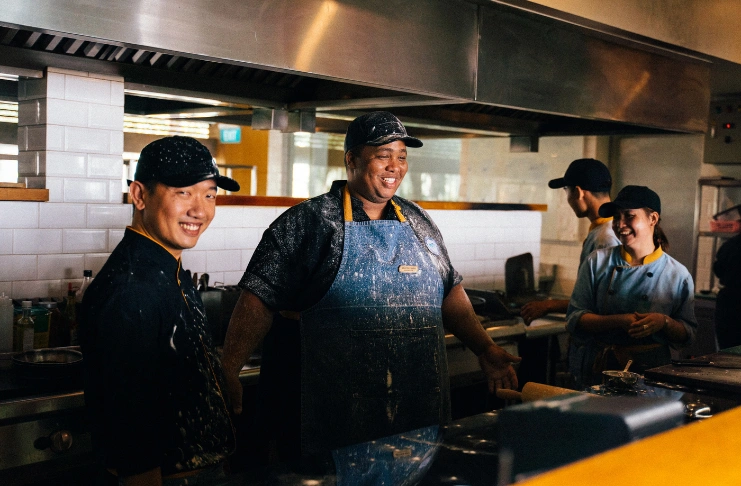
Many first-time restaurant owners make avoidable errors that hurt their business early on. The first common mistake is underestimating startup costs. Fine dining requires higher investment in kitchen equipment, décor, staffing, and licenses. Overlooking these can lead to cash flow problems.
Another mistake is neglecting market research. Opening in a location without sufficient target customers or ignoring local competition can doom the restaurant. Know who your customers are, where they live, and what they expect.
Hiring untrained or insufficient staff is a frequent problem. Fine dining demands meticulous service and culinary skills. Poorly trained employees affect guest experience and brand reputation. Invest time and resources in staff recruitment and training before opening.
Ignoring operating systems is also risky. A lack of a POS system, reservation management, or inventory tracking leads to inefficiency. These systems help control costs and improve service speed.
Many new owners also skip the soft opening. This phase reveals weaknesses in kitchen flow, menu clarity, and staff coordination. Without this trial run, problems go unnoticed until the full launch, causing negative reviews.
Finally, failing to control the menu complexity hurts profitability. Fine dining menus should be diverse but manageable. Too many dishes slow the kitchen and increase waste. Focus on quality over quantity.
Avoiding these pitfalls requires planning, attention to detail, and patience. Learning from industry best practices increases your chance of a successful launch and sustainable growth.
Conclusion
Opening a fine dining restaurant takes more than good food and elegant interiors. It demands control, discipline, and a long-term plan. Every part of the business needs to run at a higher standard. That includes hiring, layout, pricing, and service. If you get it right, the return isn’t just in revenue; it’s in reputation, loyalty, and long-term business growth.
Frequently Asked Questions
1. How profitable are fine dining restaurants?
Fine dining restaurants can achieve 10-15% profit margins when managed well. However, many fail to reach profitability due to high costs and operational challenges. Success requires excellent cost control and consistent execution.
2. How much money do you need to open a fine dining restaurant?
Plan for $200,000 to $1 million, depending on your location and concept. This includes equipment, renovation, licenses, and working capital for your first few months of operation.
3. Is $10,000 enough to open a restaurant?
No, $10,000 won’t cover even basic equipment for any restaurant type. Fine dining restaurants require substantial investment in equipment, renovation, and initial operating costs.
4. What is the most profitable type of restaurant?
Fast food restaurants typically have the highest profit margins due to lower labor costs and faster table turnover. Fine dining can be profitable but requires more skill to manage successfully.
5. What is the proper setup for fine dining?
Fine dining setup includes professional kitchen equipment, elegant dining room furniture, quality tableware, comprehensive wine storage, trained staff, and reservation management systems.
6. What should be in a fine dining restaurant?
Essential elements include a professional kitchen, a comfortable dining room, quality furniture, proper lighting, wine storage, a POS system, and a well-trained staff capable of delivering excellent service.
7. What are the 5 basic tables set up?
Fine dining table setup includes proper place settings with multiple forks and knives, quality glassware, cloth napkins, centerpieces, and appropriate spacing between tables for privacy.
8. What is the 30/30/30/10 rule for restaurants?
This financial guideline suggests 30% for food costs, 30% for labor, 30% for other expenses like rent and utilities, and 10% for profit. These percentages help guide pricing and cost control decisions.
9. How to start a fine dining restaurant?
Begin with a detailed business plan, secure adequate funding, find the right location, obtain all necessary licenses, design your space, hire experienced staff, develop your menu, and conduct thorough testing before opening.
10. What are the criteria for fine dining?
Fine dining criteria include premium ingredients, skilled food preparation, professional service, upscale atmosphere, higher price points, knowledgeable staff, quality wine selection, and attention to presentation details.
11. What is the concept of fine dining?
Fine dining focuses on creating exceptional experiences through superior food quality, professional service, elegant atmosphere, and meticulous attention to every aspect of the guest experience.
12. What is the fine dining restaurant concept?
A fine dining concept defines your restaurant’s identity through cuisine style, service approach, atmosphere, target market, and pricing that creates a cohesive upscale dining experience.
13. What is dining operations?
Dining operations encompass all restaurant activities, including food preparation, service delivery, customer management, inventory control, staff scheduling, and maintaining quality standards.
14. What is a dining concept?
A dining concept is your restaurant’s overall identity, including the type of cuisine, service style, atmosphere, target customers, and price point that guides all operational and marketing decisions.


